-
10-09-2023
Variabilidade glicêmica e mortalidade em unidades de terapia intensiva oncológicas
Revista Brasileira de Enfermagem. 2023;76(4):e20220812
Abstract
Variabilidade glicêmica e mortalidade em unidades de terapia intensiva oncológicas
Revista Brasileira de Enfermagem. 2023;76(4):e20220812
DOI 10.1590/0034-7167-2022-0812
Views0See moreRESUMEN
Objetivo:
investigar la asociación entre la variabilidad glucémica y la mortalidad en pacientes ingresados en unidades de cuidados intensivos oncológicos.
Métodos:
Se llevó a cabo un estudio de cohorte retrospectivo utilizando una muestra de conveniencia de 30 historias clínicas de pacientes de ambos sexos mayores de 18 años. La variabilidad glucémica se midió utilizando la desviación estándar y la amplitud general. El análisis estadístico se realizó utilizando la curva ROC (receiver operating characteristic) y el área bajo la curva (AUC). El nivel de significancia (α) se estableció en un 5% con un intervalo de confianza (IC) del 95%.
Resultados:
El estudio incluyó a 14 pacientes masculinos (46,67%) con una edad media de 60±15 años. Se recopilaron un total de 1503 muestras de glucemia. El análisis AUC para la desviación estándar no mostró ningún resultado estadísticamente significativo (p = 0,966; IC del 95% = [0,283, 0,726]). Por el contrario, la amplitud general tuvo una asociación estadísticamente significativa con la mortalidad (p = 0,049; IC del 95% = [0,514, 0,916]).
Conclusiones:
Este estudio encontró que la variabilidad glucémica medida por la amplitud general está significativamente asociada con la mortalidad del paciente en unidades de cuidados intensivos oncológicos. Estos hallazgos sugieren que el monitoreo de la variabilidad glucémica puede ser un factor importante en el manejo de pacientes críticamente enfermos en unidades de cuidados intensivos oncológicos.
-
REVIEW10-09-2023
Effects on communication due to face mask use: an integrative review
Revista Brasileira de Enfermagem. 2023;76(4):e20220674
Abstract
REVIEWEffects on communication due to face mask use: an integrative review
Revista Brasileira de Enfermagem. 2023;76(4):e20220674
DOI 10.1590/0034-7167-2022-0674
Views0See moreABSTRACT
Objectives:
to integrate evidence from studies on auditory perceptual and speech production effects in communication situations with face mask use.
Methods:
an integrative literature review, in MEDLINE, Cochrane Library and Embase databases. The guiding question was: what effects on communication (perceptual-auditory and speech production) occur with face mask use?
Results:
searches in electronic databases resulted in 1,478 studies and filtering resulted in 29 final studies.
Conclusions:
mask use has effects on communication, both in perception and speech production, factors that are also related to quality of life, stress and socio-emotional factors. These data can impact on indicators and alerts in favor of adopting strategies to manage mask use, involving speech production and perception when wearing a mask in health services.
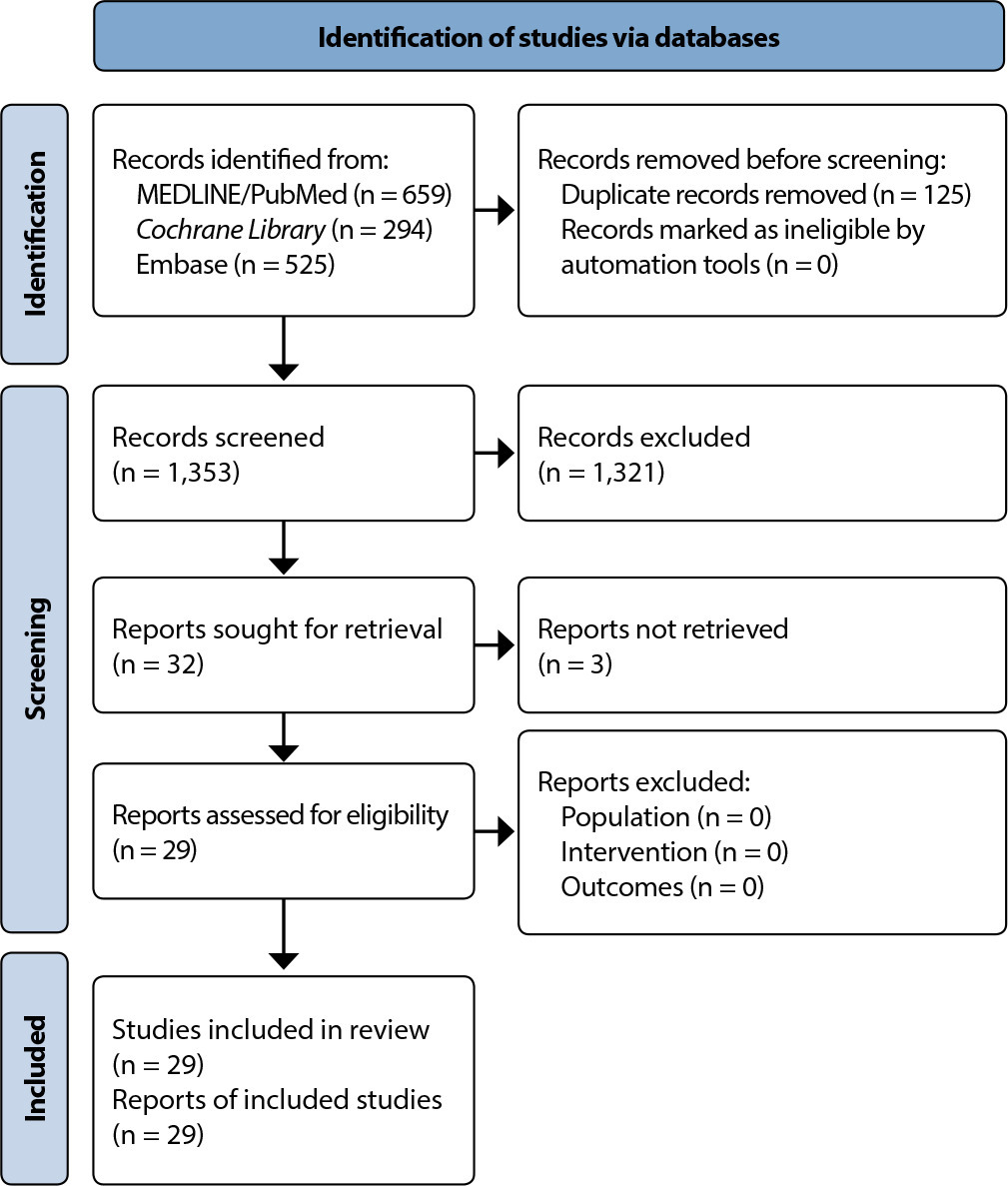
-
10-09-2023
Um estudo qualitativo das razões para baixa notificação de incidentes de segurança do paciente entre enfermeiros indonésios
Revista Brasileira de Enfermagem. 2023;76(4):e20220583
Abstract
Um estudo qualitativo das razões para baixa notificação de incidentes de segurança do paciente entre enfermeiros indonésios
Revista Brasileira de Enfermagem. 2023;76(4):e20220583
DOI 10.1590/0034-7167-2022-0583
Views0See moreRESUMEN
Objetivos:
investigar las razones de la baja notificación de incidentes de seguridad del paciente entre las enfermeras de Indonesia.
Métodos:
este estudio de caso cualitativo se llevó a cabo entre 15 enfermeras clínicas seleccionadas intencionalmente de un hospital público en Lampung, Indonesia. Se utilizó un guión de entrevista para la recolección de datos a través de entrevistas presenciales en profundidad en julio de 2022. Se utilizó el enfoque temático para el análisis de datos.
Resultados:
en este estudio surgieron siete temas: (1) Comprender la notificación de incidentes; (2) La cultura; (3) Consecuencias de la notificación; (4) Socialización y capacitación; (5) Instalaciones; (6) Comentarios; y (7) Recompensas y Castigos.
Consideraciones Finales:
estos hallazgos deben ser considerados desafíos para el comité de seguridad del paciente y la gerencia del hospital para aumentar la notificación de incidentes de seguridad del paciente, especialmente entre las enfermeras del hospital.
-
ORIGINAL ARTICLE10-09-2023
Factors associated with older adults’ knowledge, attitude and practice on skin cancer prevention
Revista Brasileira de Enfermagem. 2023;76(3):e20220606
Abstract
ORIGINAL ARTICLEFactors associated with older adults’ knowledge, attitude and practice on skin cancer prevention
Revista Brasileira de Enfermagem. 2023;76(3):e20220606
DOI 10.1590/0034-7167-2022-0606
Views0See moreABSTRACT
Objectives:
to identify factors associated with older adults’ knowledge, attitude and practice regarding skin cancer prevention.
Methods:
this is a cross-sectional study, carried out with 120 older adults from a Basic Health Unit in Quixadá, Ceará, from September to November 2018.
Results:
individuals aged 60 to 69 years and working were statistically associated with adequate knowledge (p=0.038). Having light skin, eyes and hair was associated with adequate attitude (p=0.030). Having skin problems, such as bleeding wounds, was associated with adequate practice (p=0.016). With regard to inappropriate behavior for skin cancer prevention, there was a statistically significant association between working or having worked under direct exposure to the sun, inadequate knowledge (p=0.036), inadequate attitude (p=0.010) and having incomplete primary education and inadequate practice (p<0.001).
Conclusions:
sociodemographic and clinical factors influence older adults’ knowledge, attitude and practice regarding skin cancer prevention.
-
ORIGINAL ARTICLE10-09-2023
Palliative care in nursing training: higher education course coordinators’ perception
Revista Brasileira de Enfermagem. 2023;76(3):e20220222
Abstract
ORIGINAL ARTICLEPalliative care in nursing training: higher education course coordinators’ perception
Revista Brasileira de Enfermagem. 2023;76(3):e20220222
DOI 10.1590/0034-7167-2022-0222
Views0See moreABSTRACT
Objectives:
to analyze undergraduate nursing course coordinators’ perception about nursing training in palliative care.
Methods:
a descriptive study, with a qualitative approach and thematic content analysis, carried out with coordinators of nursing courses in Higher Education Institutions in Rio Grande do Norte.
Results:
three thematic categories emerged: Nursing training in palliative care; Potentialities for teaching palliative care; and Challenges of teaching in palliative care. The coordinators described as potentialities: transversality, theoretical and practical approach, optional subject, university extensions, interdisciplinarity and transdisciplinary approach, and as challenges: biomedical model in health education and insufficient professor training.
Final Considerations:
palliative care teaching in the researched institutions in the nursing education process is approached in an incipient and fragmented way, and almost always without having a specific curricular component on the subject, being present as one of its contents.
-
ORIGINAL ARTICLE10-09-2023
Elaboration of an educational video for cardiopulmonary resuscitation with chest compressions in adults
Revista Brasileira de Enfermagem. 2023;76(3):e20220367
Abstract
ORIGINAL ARTICLEElaboration of an educational video for cardiopulmonary resuscitation with chest compressions in adults
Revista Brasileira de Enfermagem. 2023;76(3):e20220367
DOI 10.1590/0034-7167-2022-0367
Views0See moreABSTRACT
Objectives:
to develop and analyze the face and content validity of a storyboard for constructing an educational video for training laypersons in cardiopulmonary resuscitation with only chest compressions in adults.
Methods:
a methodological study of storyboard elaboration and validity for producing an educational health video. The storyboard was submitted to analysis of 20 judges to assess its adequacy with the proposed objective. To assess the agreement between judges, the Content Validity Index was calculated. After validating the storyboard, video production took place.
Results:
the Content Validity Index met expectations. Its mean in each group was ≥ 0.90 (lay judges = 0.97; expert judges = 0.90; all judges = 0.94).
Conclusions:
the video produced is composed of scientific information, professional expertise and laypersons’ perceptions, making it important evidence for health education.

-
ORIGINAL ARTICLE10-09-2023
Epidemiology of monkeypox notifications in the state of Minas Gerais, Brazil
Revista Brasileira de Enfermagem. 2023;76(3):e20220598
Abstract
ORIGINAL ARTICLEEpidemiology of monkeypox notifications in the state of Minas Gerais, Brazil
Revista Brasileira de Enfermagem. 2023;76(3):e20220598
DOI 10.1590/0034-7167-2022-0598
Views0See moreABSTRACT
Objectives:
to describe the epidemiological profile of suspected, confirmed, and probable cases of monkeypox in the state of Minas Gerais, Brazil.
Methods:
a descriptive, retrospective study of reported suspected, confirmed, and probable cases of monkeypox infection in the state of Minas Gerais, Brazil. The study period was from the first notification, on June 11, to September 7, 2022.
Results:
a total of 759 suspected, confirmed, and probable cases of monkeypox infection were reported, with 35.44% suspected, 53.75% confirmed, and 10.81% probable cases, respectively. As for the coexisting diseases within confirmed cases, 38.79% were related to people living with human immunodeficiency virus, and 13.74% had some active sexually transmitted infection. Regarding the evolution of confirmed cases, 47.43% were cured.
Conclusions:
the results contribute to greater knowledge and control of the infection by allowing better disease management and care offered in health services.
-
10-09-2023
Patient safety with covid-19 in hospital units: a scoping review
Revista Brasileira de Enfermagem. 2023;76:e20220557
Abstract
Patient safety with covid-19 in hospital units: a scoping review
Revista Brasileira de Enfermagem. 2023;76:e20220557
DOI 10.1590/0034-7167-2022-0557
Views0See moreABSTRACT
Objective:
Map, in the scientific literature, the actions taken to promote the safety of patients with covid-19 in the hospital context.
Methods:
This is a scoping review according to the Joanna Briggs Institute, using the Checklist Preferred Reporting Items for Systematic Reviews and Meta-Analyses Extension for Scoping Reviews. In April 2022, searches were performed on nine data sources. The results were summarized in a table and analyzed descriptively.
Results:
Fifteen studies were selected to compose the final sample. Most articles refer to cohort studies, followed by clinical trials. As for the areas of activity, there was a predominance of surgical centers, followed by adult and pediatric Intensive Care Units.
Conclusions:
With this review, it was possible to map measures such as contingency plans and reorganization of beds, rooms, and operating rooms, in addition to the isolation and distancing practiced by patients and professionals.
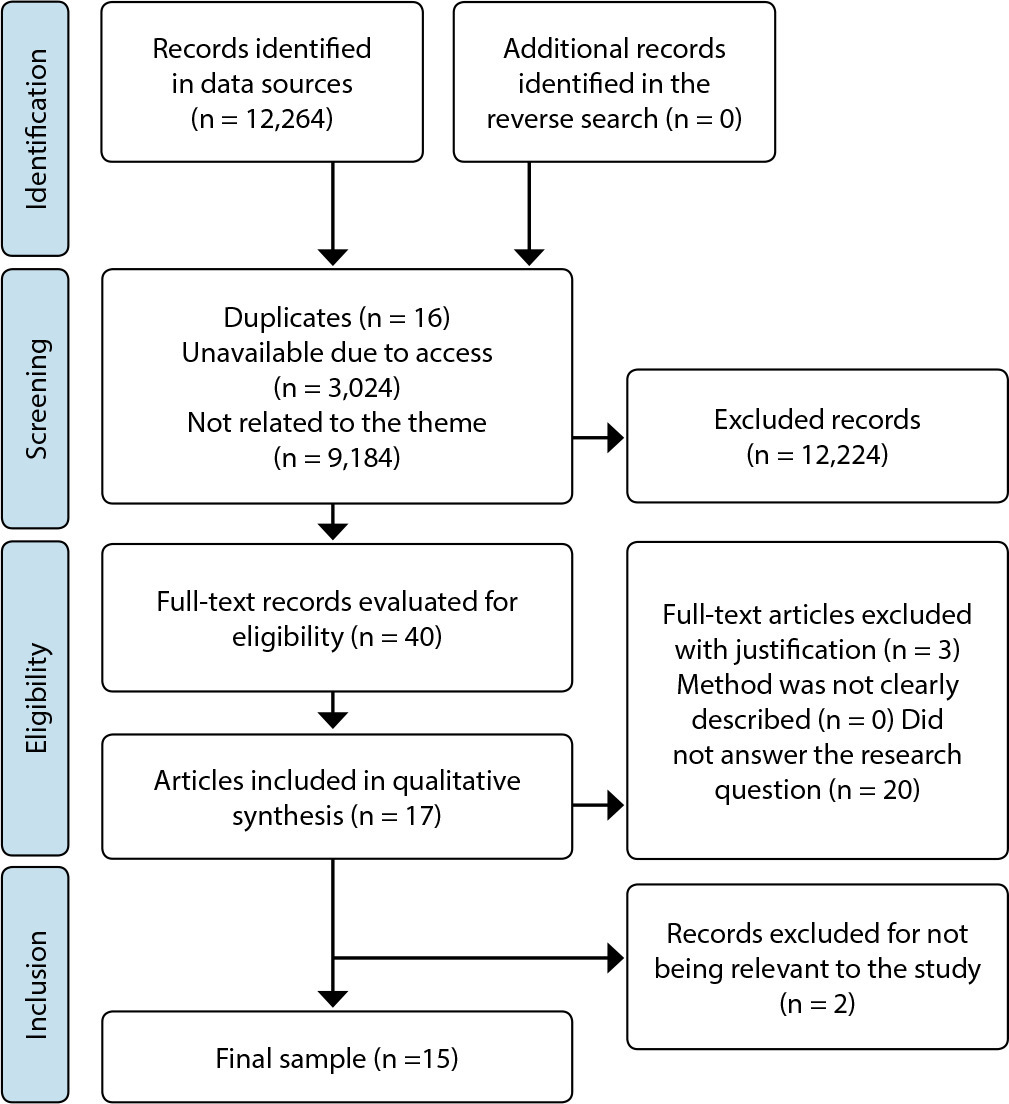
-
REVIEW06-10-2022
Self-inflicted violence and suicide in people living with HIV/AIDS: a systematic review
Revista Brasileira de Enfermagem. 2022;75:e20210768
Abstract
REVIEWSelf-inflicted violence and suicide in people living with HIV/AIDS: a systematic review
Revista Brasileira de Enfermagem. 2022;75:e20210768
DOI 10.1590/0034-7167-2021-0768
Views0See moreABSTRACT
Objectives:
to analyze intellectual productions on self-inflicted violence and suicide in people living with HIV/AIDS.
Methods:
a systematic review, carried out between March and April 2021, in the PubMed®/MEDLINE®, Web of Science and LILACS databases, subsidized in the Strengthening the Reporting of Observational Studies in Epidemiology. The period outlined was from 2011 to 2020.
Results:
a total of 199 studies were identified, and 16 composed the final sample, grouped into the categories: Sociodemographic characteristics of victims of self-inflicted violence/suicide and their intervening factors (pointing to young adults, especially homosexuals, with low social support and a history of mental illness or substance abuse as usual victims); Successful measures for suicide prevention/control in people living with HIV/AIDS (suggesting more frequent psychosocial and clinical follow-up of those starting antiretroviral and immunocompromised treatment).
Conclusions:
biopsychosocial follow-up, analysis of sociodemographic profile and intervening factors should be frequent in this population for disease prevention/control.

-
ORIGINAL ARTICLE09-05-2022
Screening for common mental disorder in elderly residents in the countryside: a cross-sectional study
Revista Brasileira de Enfermagem. 2022;75:e20210875
Abstract
ORIGINAL ARTICLEScreening for common mental disorder in elderly residents in the countryside: a cross-sectional study
Revista Brasileira de Enfermagem. 2022;75:e20210875
DOI 10.1590/0034-7167-2021-0875
Views0See moreABSTRACT
Objective:
To estimate the prevalence of common mental disorders and their associated factors in the elderly in a municipality in the countryside of the Brazilian Midwest.
Methods:
Quantitative, observational, cross-sectional approach research, conducted with 218 elderly people.
Results:
The prevalence of the common mental disorder among the elderly was 25.1%; in the univariate analysis, it was higher in females (35.4%), in the age group of 80 years or older (46.1%), brown skin color (30.2%), widowed (42.6%), illiterate (47.6%), and retired (27.6%). In the multiple analysis, the variables female gender (p<0.006), age 80 years or older (p<0.036), dissatisfaction with life (p<0.009), lack of social interaction (p=0.017), and dysfunctional family (p=0.021) remained associated with CMD.
Conclusion:
The results revealed are helpful and contribute to the reinforcement of the need for mental health care in this population extract so growing worldwide.
-
ORIGINAL ARTICLE06-03-2022
Association between falls in older adults and prevention group
Revista Brasileira de Enfermagem. 2022;75:e20200207
Abstract
ORIGINAL ARTICLEAssociation between falls in older adults and prevention group
Revista Brasileira de Enfermagem. 2022;75:e20200207
DOI 10.1590/0034-7167-2020-0207
Views0See moreABSTRACT
Objectives:
to assess the effectiveness of guidelines on fall prevention in a group of older adults in Primary Health Care.
Methods:
a cross-sectional study, carried out with older adults selected by a simple random sample (274; N=1,234). Data covered sociodemographic and socioeconomic variables, marital status, health conditions, factors associated with falls and participation in the prevention group. Student’s t test was used, and dichotomous variables were used by the chi-square test. The project met ethical requirements.
Results:
sample with female profile (61.7%), married, with low education, mean age of 71.69 years. The factors associated with falls identified were female sex, medicalization and participation in the prevention group. There was no protective association between participation in a fall prevention group in older adults and a decrease in the number of falls.
Conclusions:
based on evidence, a personalized intervention during the nursing visit is suggested as a strategy to prevent falls.

-
ORIGINAL ARTICLE03-07-2022
Predictors of frailty in older people users of Primary Health Care
Revista Brasileira de Enfermagem. 2022;75:e20201292
Abstract
ORIGINAL ARTICLEPredictors of frailty in older people users of Primary Health Care
Revista Brasileira de Enfermagem. 2022;75:e20201292
DOI 10.1590/0034-7167-2020-1292
Views0See moreABSTRACT
Objective:
to identify the prevalence and predictors of frailty in older people in Primary Health Care.
Method:
this is a descriptive and correlational study, carried out in a convenience sample of 136 older people in the community. Data were collected through a sociodemographic and clinical questionnaire and frailty phenotype. Student’s t test or U-Mann-Whitney test, chi-square and binary logistic regression were used for data analysis.
Results:
the prevalence of frailty was 26.5% (n=36). Frail individuals had older age (p=0.011), worse self-rated health (p=0.001) and lower physical capacity (p<0.001). In the multivariable regression, it was observed that frail individuals had older age (Odds Ratio=1.111; 95% confidence interval=1.026-1.203) and worse physical capacity (Odds Ratio=0.673; 95% confidence interval=0.508-0.893).
Conclusions:
the prevalence of frailty in older people in Primary Health Care was considerable. Advanced age and worse physical capacity were the most relevant predictors of frailty in the elderly.
-
ORIGINAL ARTICLE04-15-2022
Validation of Questionnaire to Assess the Impact of Dementia on the Family
Revista Brasileira de Enfermagem. 2022;75:e20210232
Abstract
ORIGINAL ARTICLEValidation of Questionnaire to Assess the Impact of Dementia on the Family
Revista Brasileira de Enfermagem. 2022;75:e20210232
DOI 10.1590/0034-7167-2021-0232
Views0See moreABSTRACT
Objective:
To validate a questionnaire to assess the impact of dementia on one of the household members.
Methods:
Methodological study. The instrument was designed based on literature review, expert opinion, and researchers’ experience and then applied to a non-probability convenience sample consisting of 262 family members who live daily with a person with dementia. The construct validity was studied by exploratory factor analysis, principal components method, with varimax rotation of the items.
Results:
An instrument with 30 items was obtained, distributed in four dimensions: “Emotional dimension,” “Economic dimension,” “Family relations dimension,” and “Support-seeking dimension.” Factor analysis revealed a total explained variance of 54.96% and a total Cronbach’s alpha of .899.
Conclusions:
The instrument presents high internal consistency, grouped into four dimensions, all closely related to the family’s adaptation to the onset of dementia in one of its members.
-
ORIGINAL ARTICLE03-07-2022
Is self-esteem associated with the elderly person’s quality of life?
Revista Brasileira de Enfermagem. 2022;75:e20210388
Abstract
ORIGINAL ARTICLEIs self-esteem associated with the elderly person’s quality of life?
Revista Brasileira de Enfermagem. 2022;75:e20210388
DOI 10.1590/0034-7167-2021-0388
Views0See moreABSTRACT
Objective:
To analyze the association between self-esteem and quality of life in the elderly.
Methods:
Cross-sectional web survey developed with 519 elderly people. Participants filled out three data collection instruments developed on the Google Forms platform and widely disseminated through all of Brazil. Fisher’s exact test, Mann-Whitney, Pearson correlation, and linear regression with 95% confidence interval were used.
Results:
Self-esteem was associated with all quality-of-life facets: sensory skills [β= 1.307; p<0.001]; autonomy [β= 2.101; p<0.001]; past, present, and future activities [β= 2.486; p<0.001]; social presence [β= 2.547; p<0.001]; death and dying [β= 2.175; p<0.001]; and intimacy [β=2.378; p<0.001].
Conclusion:
There is a positive and statistically significant association between self-esteem and quality of life in the elderly. We therefore suggest the development of local policies capable of raising this age groups’ self-esteem and reaffirming aging as a new possibility for discoveries and pleasure.
-
EXPERIENCE REPORT10-24-2022
Nursing process for elderly women susceptible to falls from the perspective of the Pender’s Model
Revista Brasileira de Enfermagem. 2022;75:e20210913
Abstract
EXPERIENCE REPORTNursing process for elderly women susceptible to falls from the perspective of the Pender’s Model
Revista Brasileira de Enfermagem. 2022;75:e20210913
DOI 10.1590/0034-7167-2021-0913
Views0See moreABSTRACT
Objectives:
to describe the strategy of applying the nursing process guided by Pender’s Health Promotion Model to elderly women susceptible to falls with a view to promoting a self-efficacy behavior for fall prevention.
Methods:
application of the nursing process to eleven elderly women who had already experienced falls, living in a neighborhood in the outskirts of Belem, state of Pará, which involved interviews to obtain their nursing history and group meetings using the focus group technique to develop the other phases of the nursing process: nursing diagnosis, nursing interventions, and nursing assessment.
Results:
despite the risk factors for falls, the intervention model adopted in this study allowed elderly women to enhance their self-efficacy.
Final Considerations:
the model proved to be suitable for the participation of elderly women in actions to build fall prevention behaviors, with a view to healthier lifestyles.

-
ORIGINAL ARTICLE10-24-2022
Factors associated with symptoms of physical and emotional burden in informal caregivers of the elderly
Revista Brasileira de Enfermagem. 2022;75:e20210927
Abstract
ORIGINAL ARTICLEFactors associated with symptoms of physical and emotional burden in informal caregivers of the elderly
Revista Brasileira de Enfermagem. 2022;75:e20210927
DOI 10.1590/0034-7167-2021-0927
Views1See moreABSTRACT
Objectives:
to analyze the personal and work-related burden factors associated with physical and emotional symptoms of informal caregivers of the elderly.
Methods:
cross-sectional study conducted with 121 informal caregivers and 121 seniors who received care, assessed individually for the risk of: physical overload, musculoskeletal symptoms, Self-Reporting Questionnaire, effort perception, and Katz index.
Results:
a greater perception of effort raises up to 3.3 times the chances of presenting symptoms of pain in the spine region (p=0.01), and lower functional capacity of the elderly increases up to 1.3 times the chances of presenting pain symptoms in the spine region (p=0.02). The symptoms of emotional overload were associated with the caregiver’s low income (p=0.02).
Conclusions:
the perception of effort, dependence of the elderly, caregiver’s age, and symptoms of emotional overload are involved with caregivers’ symptoms of physical overload, and low income, with emotional overload.
-
ORIGINAL ARTICLE08-19-2019
Mobile application for the teaching of the International Classification for Nursing Practice
Revista Brasileira de Enfermagem. 2019;72(4):1020-1027
Abstract
ORIGINAL ARTICLEMobile application for the teaching of the International Classification for Nursing Practice
Revista Brasileira de Enfermagem. 2019;72(4):1020-1027
DOI 10.1590/0034-7167-2018-0751
Views0See moreABSTRACT
Objective:
Developing a mobile application for the teaching of the International Classification for Nursing Practice.
Methods:
Methodological applied research for technological production, performed in three phases of the contextualized instructional design model: analysis, design and development.
Results:
The application has an initial screen, which provides information about the team and its purpose. Then, four moblets are listed, including presentation, user’s guide consisting of five modules, educational games and five clinical cases. The references on which the application was based are also presented.
Final considerations:
It was possible to develop an application with the potential to promote the knowledge of nursing students and professionals about this classification system.
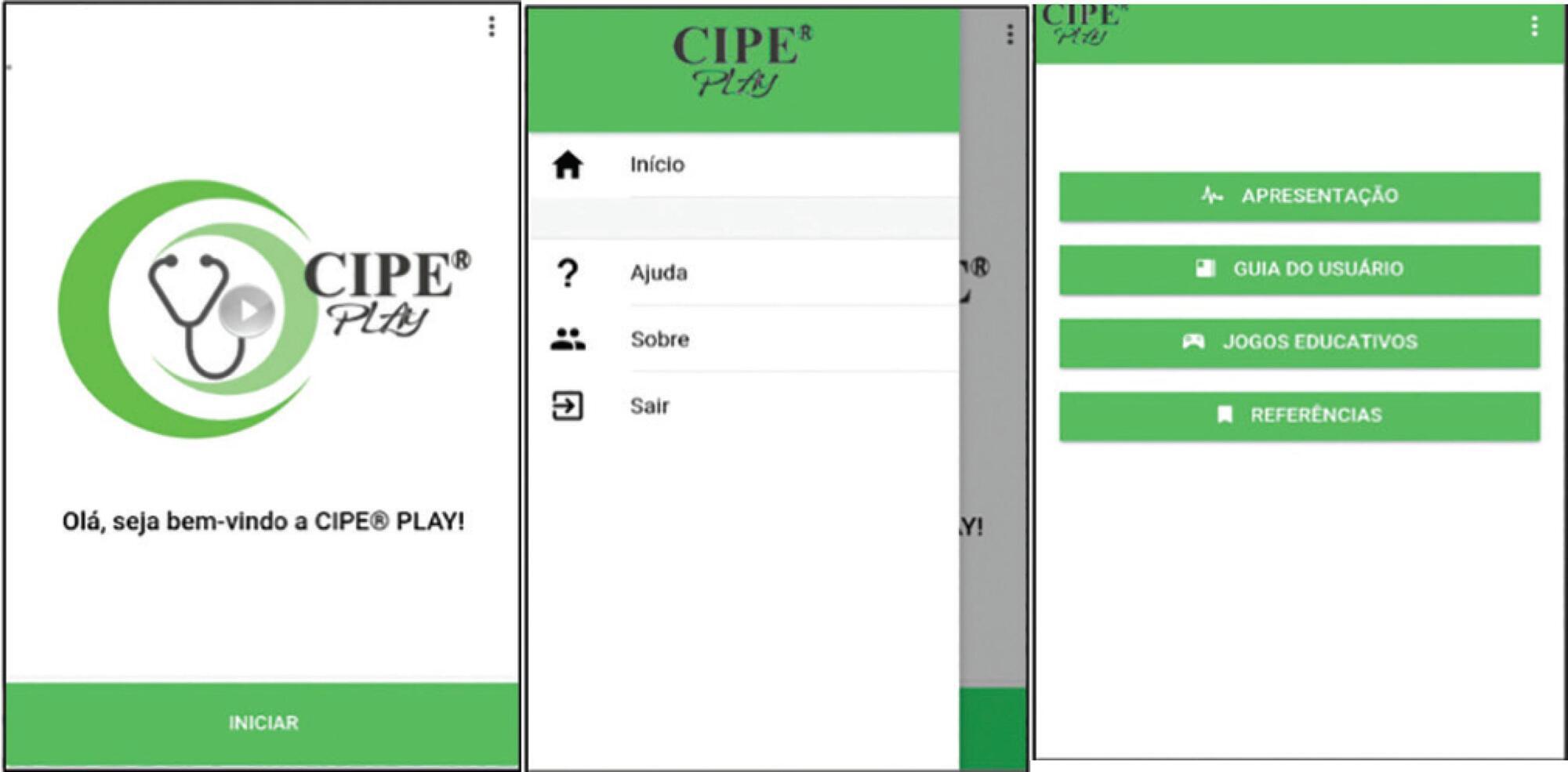
-
ORIGINAL ARTICLE08-14-2020
Education to prevent ventilator-associated pneumonia in intensive care unit
Revista Brasileira de Enfermagem. 2020;73(6):e20190477
Abstract
ORIGINAL ARTICLEEducation to prevent ventilator-associated pneumonia in intensive care unit
Revista Brasileira de Enfermagem. 2020;73(6):e20190477
DOI 10.1590/0034-7167-2019-0477
Views0INTRODUCTIONVentilator-Associated Pneumonia (VAP) is one of the complications related to the care of patients hospitalized in the Intensive Care Unit (ICU), which, according to consulted authors, exceeds the mortality rates of other Healthcare Related Infections (HRI). VAP is the second most frequent infection in patients admitted to the ICU, as well as the most prevalent […]See more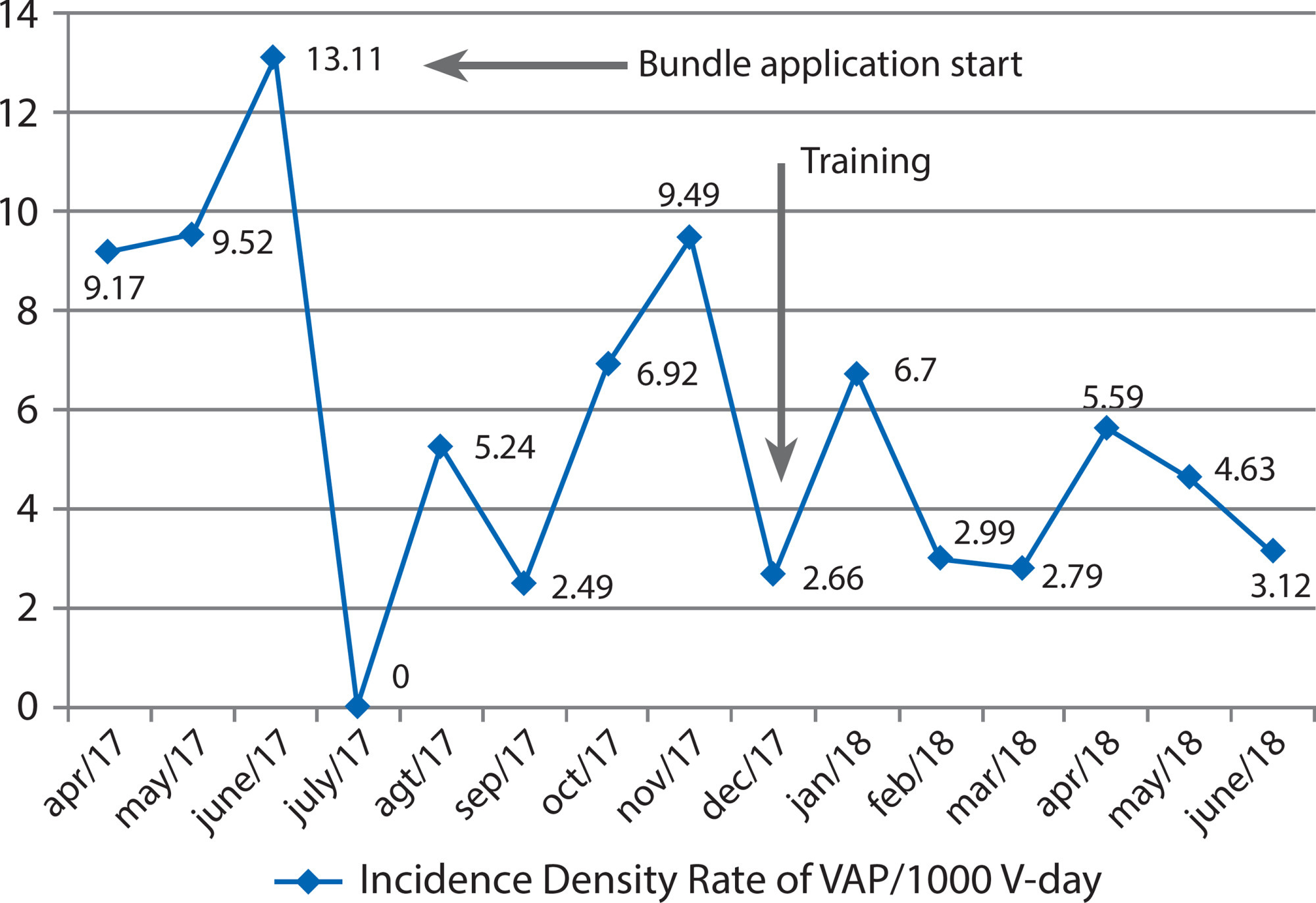
-
08-19-2019
Degree in Nursing: education through problem-based learning
Revista Brasileira de Enfermagem. 2019;72(4):1071-1077
Abstract
Degree in Nursing: education through problem-based learning
Revista Brasileira de Enfermagem. 2019;72(4):1071-1077
DOI 10.1590/0034-7167-2018-0298
Views0See moreABSTRACT
Objective:
To describe how undergraduate courses in Nursing are using the problem-based learning (PBL).
Method:
Integrative literature review, from searches in the databases Education Resources Information Center (ERIC), Latin American and Caribbean Health Sciences Literature (Lilacs), and PubMed, from 2010 to 2015. 36 articles were analyzed.
Results:
A teaching method used in all continents, the PBL enables improvement of the critical thinking, autonomy, motivation for learning, active search attitude, ability to work in teams, and problem-solving. Difficulties and challenges relate to the training of students and teachers to understand the principles of the method.
Final considerations:
The benefits of PBL coincide with the needs of nursing training, but its applicability demands constant review in seeking to develop the skills necessary for this training.
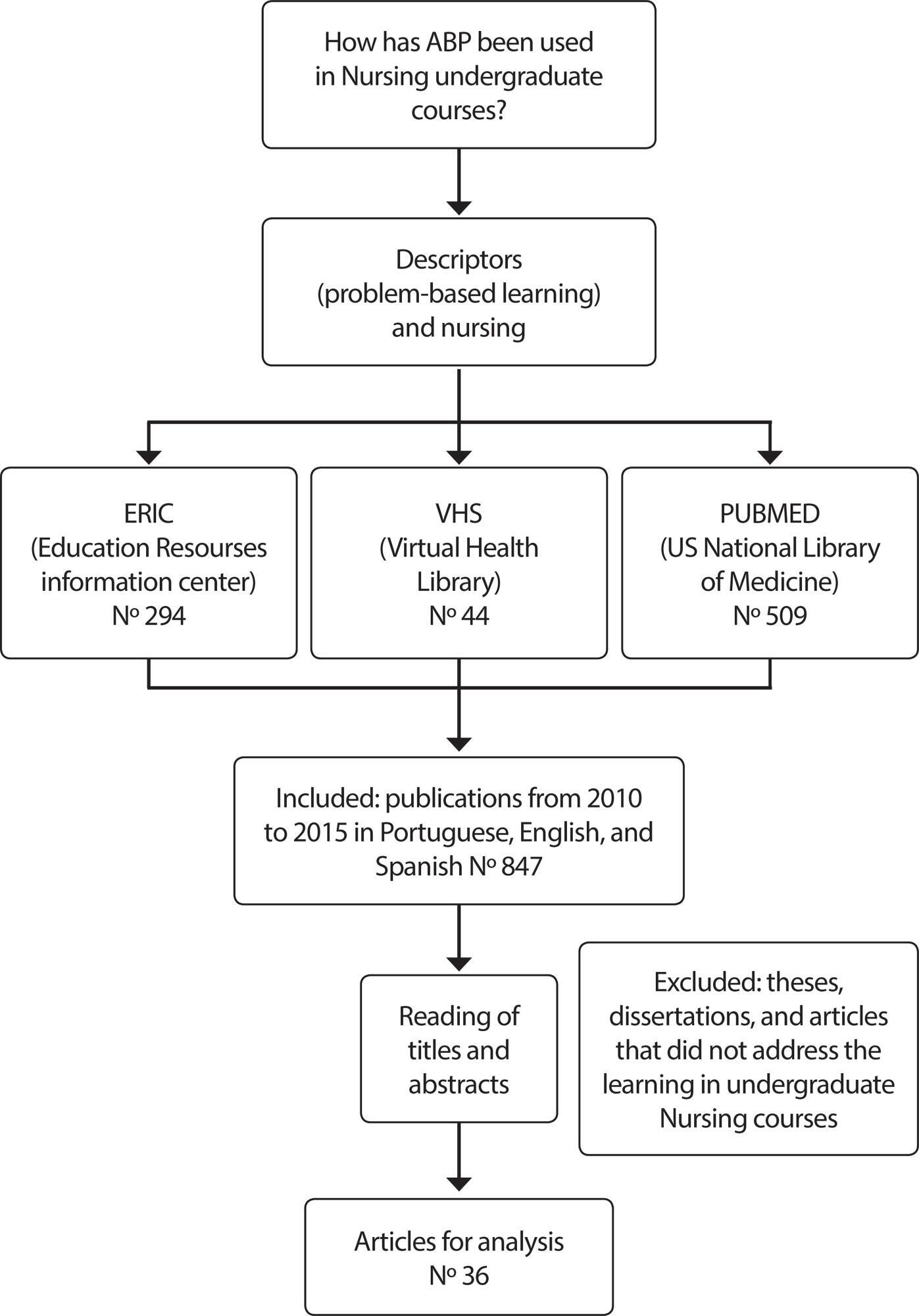
-
ORIGINAL ARTICLE12-13-2019
Mobile health technology for gestational care: evaluation of the GestAção’s app
Revista Brasileira de Enfermagem. 2019;72:266-273
Abstract
ORIGINAL ARTICLEMobile health technology for gestational care: evaluation of the GestAção’s app
Revista Brasileira de Enfermagem. 2019;72:266-273
DOI 10.1590/0034-7167-2018-0641
Views0See moreABSTRACT
Objective:
to evaluate the GestAção application, based on the experience of pregnant women use.
Method:
an evaluative, applied, methodological, quantitative-qualitative study. This tool was evaluated by 13 pregnant women through questionnaires for sociodemographic profile characterization and Likert scale use to calculate Content Validity Index (CVI); and semi-structured interview, with analysis based on Semiotics.
Results:
the study evidenced a significant level of satisfaction of pregnant women with the application use, considering the objectives (CVI = 0.92), structure and presentation (CVI = 0.86), and relevance (CVI = 0.92).
Final considerations:
the GestAção application obtained an overall CVI of 0.90, evidencing it as a facilitating and supporting technology in the empowerment of pregnant women interested in obtaining knowledge about pregnancy. It has been proved to be a powerful tool to qualify good practices in nursing consultation.
-
REFLECTION06-29-2020
Children’s (in)visibility in social vulnerability and the impact of the novel coronavirus (COVID-19)
Revista Brasileira de Enfermagem. 2020;73:e20200302
Abstract
REFLECTIONChildren’s (in)visibility in social vulnerability and the impact of the novel coronavirus (COVID-19)
Revista Brasileira de Enfermagem. 2020;73:e20200302
DOI 10.1590/0034-7167-2020-0302
Views0See moreABSTRACT
Objective:
To examine the impact of the infection by the novel coronavirus on Brazilian children in situation of social vulnerability based on the Millennium Sustainable Development Goals.
Method:
Reflective study based on discursive formulation in three aspects: principles of the objectives and goals for the millennium sustainable development; impact of the pandemic on the health of children and their families living in social vulnerability; and the role of pediatric nursing in the care provided – limits and challenges.
Results:
In January 2020, the news of COVID 19 is released as a pandemic. In Brazil, children and families are still without access to basic rights, thereby increasing their risks of social vulnerability because of the quarantine. The nursing field has an important role in monitoring children and their families, offering guidance in search for solutions and preventing contamination.
Conclusion:
There are still challenges to be overcome by the children and their families in situations of vulnerability against COVID-19.
-
ORIGINAL ARTICLE07-10-2020
Profile of nursing students: quality of life, sleep and eating habits
Revista Brasileira de Enfermagem. 2020;73:e20190365
Abstract
ORIGINAL ARTICLEProfile of nursing students: quality of life, sleep and eating habits
Revista Brasileira de Enfermagem. 2020;73:e20190365
DOI 10.1590/0034-7167-2019-0365
Views0See moreABSTRACT
Objective:
to profile and analyze sleep quality, quality of life and eating habits of nursing students.
Methods:
a cross-sectional, comparative and correlational study with the following variables: sociodemographic characteristics, Pittsburgh sleep quality index, quality of life and eating habits. One hundred ninety-five students participated in the study.
Results:
participants were on average 24 years old. Results showed that females were prevalent (87.1%); 71.0% of the students had poor sleep quality; 98.9% used electronic devices before bedtime. Self-perception of quality of life was indifferent (38.3%), and self-perception of general health, 36.9% expressed satisfaction. Among the participants, 45.13% consumed one portion of fruit and 40.66% two to three portions of vegetables daily.
Conclusion:
the study allowed the profile of these students, sedentary, overweight and poor sleep quality young students who studied and worked.
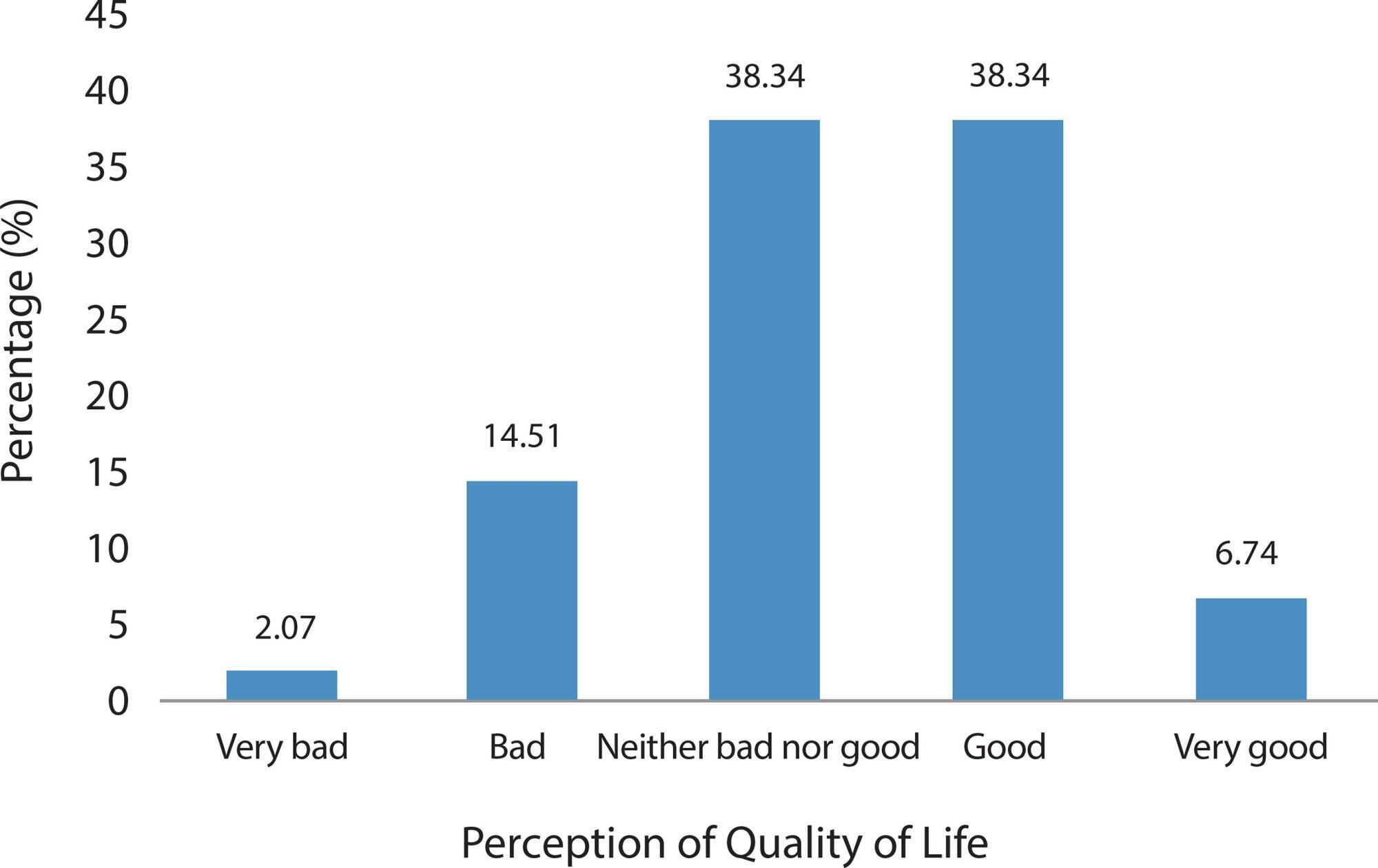
-
ORIGINAL ARTICLE06-09-2020
Stress of nursing professionals working in pre-hospital care
Revista Brasileira de Enfermagem. 2020;73(2):e20180660
Abstract
ORIGINAL ARTICLEStress of nursing professionals working in pre-hospital care
Revista Brasileira de Enfermagem. 2020;73(2):e20180660
DOI 10.1590/0034-7167-2018-0660
Views0See moreABSTRACT
Objectives:
To analyze the factors related to the occupational stress of a Mobile Emergency Care Service (Samu) nursing team.
Methods:
This is a descriptive study, with a quantitative approach, performed with nursing professionals from Samu service of a city of Pernambuco. A sociodemographic questionnaire and the Lipp’s Stress Symptom Inventory were used.
Results:
The participants presenting stress (24.6%) were classified in the phases: resistance (19.7%), exhaustion (4.4%) and near exhaustion (0.5%). It was also observed an association of stress level with the following factors: gender, sleep quality, professional autonomy restriction, emotional exhaustion with work performed and work in inadequate or unhealthy physical facilities.
Conclusions:
Although showing low occurrence of stress, this study pointed out the profile that presents the highest risk of developing occupational stress, through the factors significantly associated with stress in the studied population.
-
ORIGINAL ARTICLE07-10-2020
Nursing appeals on social media in times of coronavirus
Revista Brasileira de Enfermagem. 2020;73:e20200225
Abstract
ORIGINAL ARTICLENursing appeals on social media in times of coronavirus
Revista Brasileira de Enfermagem. 2020;73:e20200225
DOI 10.1590/0034-7167-2020-0225
Views0See moreABSTRACT
Objective:
to know and analyze the nursing appeals on social media during the COVID-19 pandemic.
Method:
it is a documentary, qualitative, descriptive, and exploratory research with data collected in publications in two social media. Two hundred ninety-five publications of nursing professionals published on Twitter and Instagram between March 11 and 20, 2020 were submitted to content analysis using ATLAS.ti resources.
Results:
four thematic categories emerged: #stayathome, #whereismyPPE, #nowweareheroes, #nothingnewinthefrontline, according to frequency of communications. The appeals show a relationship with the social relevance of nursing professional work and with the conditions required for its exercise.
Final considerations:
old and new challenges of the profession were placed on the agenda in social media, especially related to the workforce and instruments of labor. These speeches can serve as a foundation for policies to improve working conditions and promote appreciation of the profession.

Search
Search in:
Nuvem de Tags
Adolescente (85) Atenção Primária à Saúde (239) COVID-19 (91) Criança (91) Cuidados de Enfermagem (269) Educação em Enfermagem (151) Educação em Saúde (139) Enfermagem (930) Enfermagem Pediátrica (86) Estudantes de Enfermagem (77) Estudos de Validação (131) Família (87) Idoso (208) Promoção da Saúde (99) Qualidade de Vida (104) Saúde do Trabalhador (86) Saúde Mental (145) Saúde Pública (82) Segurança do Paciente (150) Tecnologia Educacional (100)



